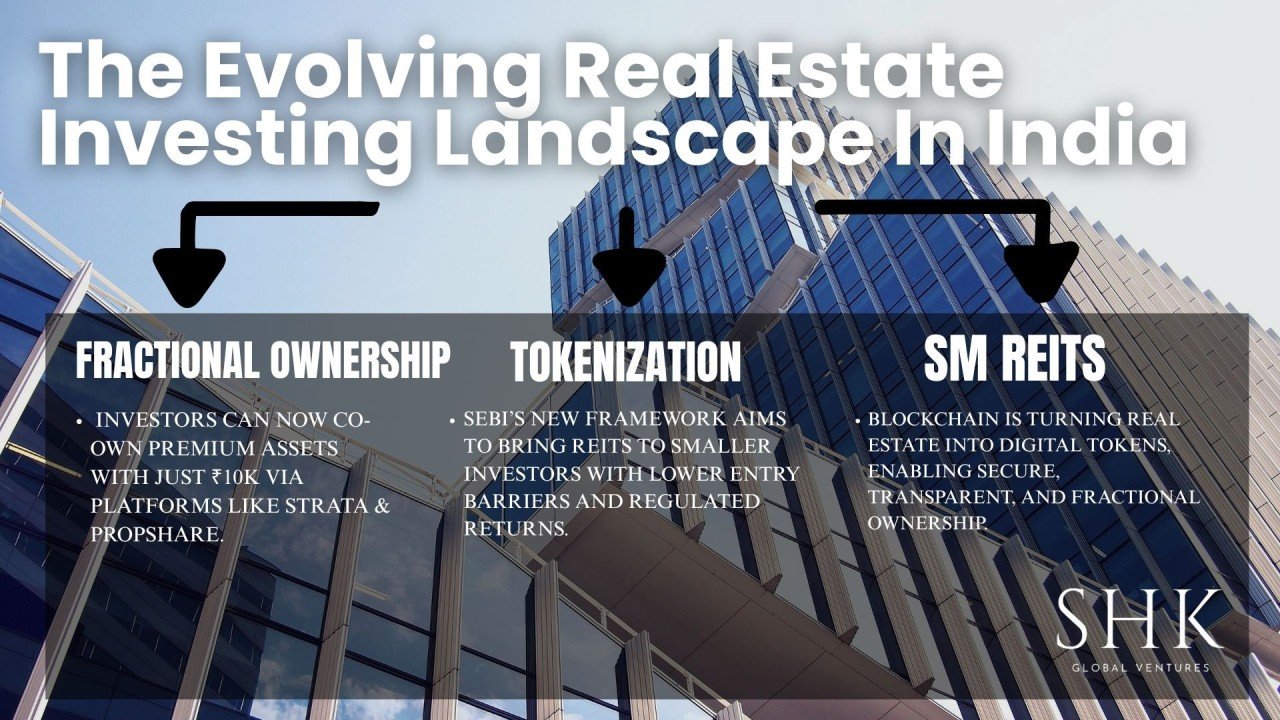The traditional Indian real estate market, long characterized by high capital requirements, illiquidity, and opaque processes, is experiencing a profound shift. Innovative investment models like fractional ownership, tokenization, and Small and Medium REITs (SM REITs) are emerging as powerful catalysts, promising to democratize access, enhance liquidity, and introduce greater transparency. While these innovations unlock immense potential, they also come with a unique set of challenges that need careful navigation.
The Rise of Accessible Real Estate Investment
At its core, fractional ownership allows multiple investors to collectively own a portion of a high-value real estate asset, typically commercial properties, by pooling funds. This model significantly lowers the entry barrier, making premium, income-generating assets accessible to a wider pool of retail investors who might not be able to afford an entire property. Investors receive a share of rental income and capital appreciation proportionate to their investment.
Building on this, Small and Medium REITs (SM REITs) represent a regulated evolution of fractional ownership. Introduced by SEBI, SM REITs allow for collective investment in a portfolio of smaller, revenue-generating real estate assets (between INR 50 crore and INR 499 crore). This framework brings enhanced investor protection, regulatory oversight, and a structured mechanism for pooled investments, akin to mutual funds for real estate.
Real estate tokenization, while still in its nascent stages in India, takes fractionalization a step further by leveraging blockchain technology. It involves converting real estate ownership rights into digital tokens on a blockchain. This promises unprecedented levels of liquidity, transparency, and traceability by enabling near-instantaneous transfers and immutable records of ownership.
Opportunities in the New Paradigm
- Democratization of Investment: The most significant opportunity is making high-value real estate investments accessible to retail and semi-high-net-worth investors. This broadens the investor base beyond HNIs and institutional players.
- Enhanced Liquidity: Traditionally illiquid, real estate gains improved liquidity through fractionalization and, more significantly, through tokenization. Digital platforms facilitate easier buying and selling of fractional units or tokens, reducing transaction times.
- Diversification for Investors: These models allow investors to diversify their portfolios by investing smaller amounts across multiple properties or asset classes (e.g., office spaces, warehouses, retail, co-working), mitigating risk.
- Transparency and Efficiency: Digital platforms and blockchain technology (for tokenization) introduce greater transparency in transactions, property management, and income distribution. Smart contracts can automate rental payouts and ownership transfers, reducing administrative overheads and potential for fraud.
- New Funding Avenues for Developers: Developers can tap into a wider pool of capital, reducing reliance on traditional financing and potentially accelerating project development.
- Unlocking Value from Commercial Assets: SM REITs, in particular, aim to unlock the value of a vast inventory of Grade A commercial properties that were previously out of reach for smaller investors.
Challenges on the Horizon
- Regulatory Clarity and Evolution: While SEBI has regulated SM REITs, a comprehensive and uniform regulatory framework for real estate tokenization across different states in India is still evolving. Land being a state subject adds complexity. Uncertainty around legal classification of tokens (as securities, commodities, or unique assets) can deter adoption.
- Investor Awareness and Education: Despite the benefits, a significant portion of potential investors remains unaware of these new avenues or lacks understanding of their mechanics, risks, and regulatory safeguards. Building trust and educating the market are crucial.
- Technology Adoption and Infrastructure: For tokenization, robust blockchain infrastructure, secure digital wallets, and interoperability standards are essential. In some regions, the digitization of land records is still incomplete, posing a foundational challenge.
- Valuation and Pricing Mechanism: Establishing fair and transparent valuation mechanisms for fractional units or tokens, especially in a relatively new market, can be challenging.
- Market Depth and Liquidity: While these models aim to enhance liquidity, the actual secondary market for trading fractional units or tokens needs to develop sufficient depth to ensure investors can exit their positions easily without significant price impact.
- Cybersecurity Risks: As investments move onto digital platforms and blockchain, the risk of cyberattacks, smart contract vulnerabilities, and data breaches becomes a critical concern that requires robust security measures.
- Taxation Implications: The tax treatment of income and capital gains from fractional ownership and tokenized assets needs clearer guidelines to ensure predictability for investors. Recent budget changes for SM REITs are a positive step, but more clarity for wider tokenization is awaited.
Conclusion
India’s real estate investment landscape is on the cusp of a significant transformation, driven by the increasing maturity of fractional ownership, the regulatory clarity brought by SM REITs, and the nascent but promising potential of tokenization. These innovations hold the key to democratizing real estate investment, fostering greater liquidity, and enhancing transparency. However, for these models to truly realize their full potential, addressing regulatory ambiguities, fostering investor education, building robust technological infrastructure, and ensuring strong market liquidity will be paramount. As stakeholders collaborate and the ecosystem matures, India is poised to redefine how real estate assets are owned, traded, and valued, paving the way for a more inclusive and dynamic investment future.


